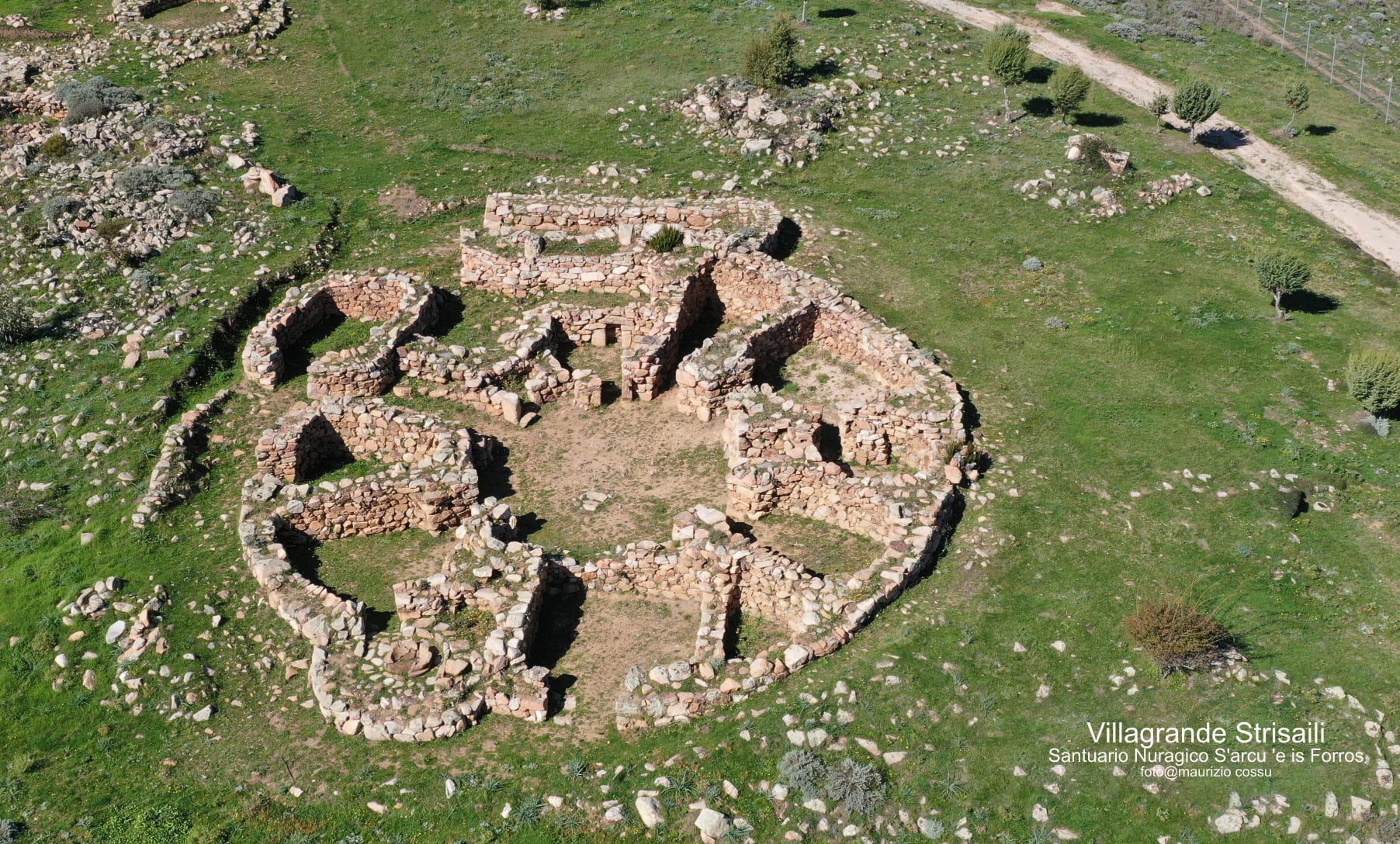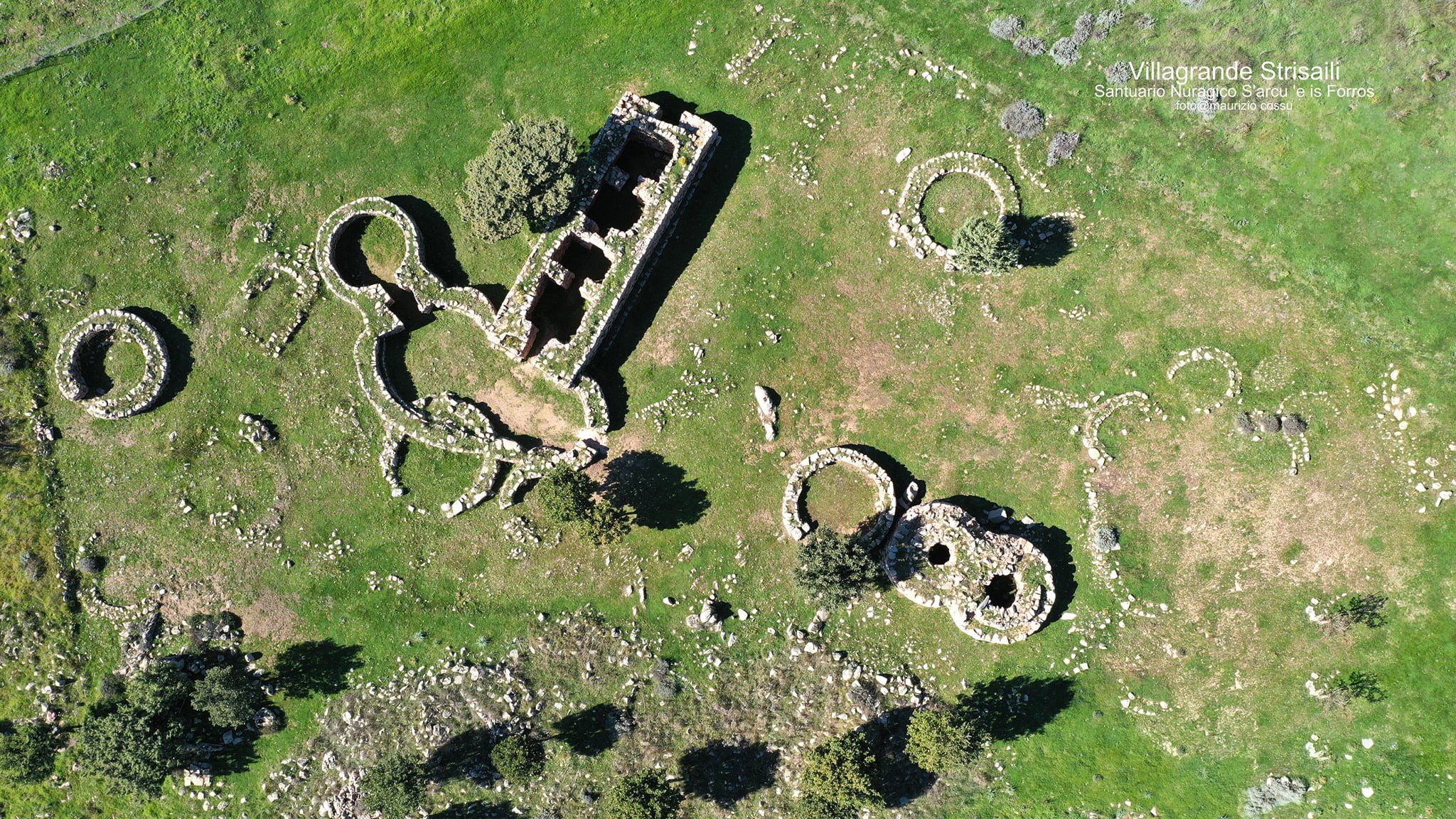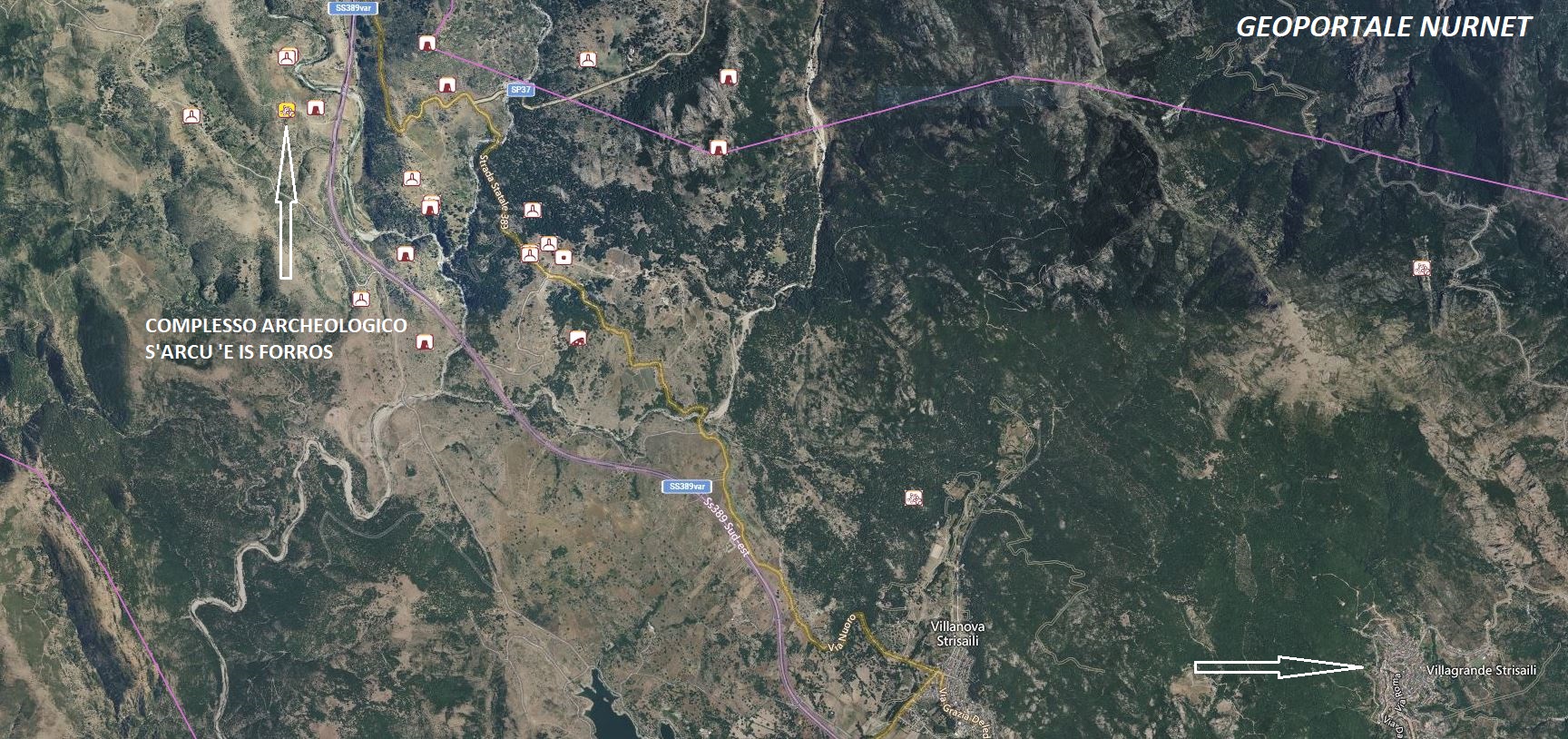A nuragic sanctuary on the slopes of Gennargentu, in central-eastern Sardinia, tells the story of spirituality, architecture, and daily activities of the people three thousand years ago.
A people who lived in symbiosis with nature, who expressed their spirituality through the worship of water and were able to refine their skills in working with stones and metals with increasing ease. Between Ogliastra and Barbagia, in the territory of Villagrande Strisaili, the valley ofriu Pira ‘e Onniit houses an intricate and fascinating archaeological complex, with characteristics attributable to the Nuragic civilization, it is calleds’Arcu ‘e is Forros, symbol of the progressive evolution of thefaciescultural influences from the Bronze Age to the Iron Age and the multiple relationships with extra-island civilizations.
It is a village-sanctuary, built on a prior settlement of huts, in a portion of land bordered by two streams. Within the sacred and residential area are included three temples, two clusters of huts, and, not far away, a trilobate nuraghe.
The main temple, atmegaron, it is 17 meters long, made of granite and schist and consists of four rooms. It is surrounded by atemenos,that is, a sacred enclosure, equipped with benches carved at the base of the perimeter wall, probably used for the resting of the faithful or for the deposition of offerings. The same function was likely served by a stone base in the inner walls. On the western side, there is a gutter connected to a rectangular opening, useful for draining the waters from the rituals. The second temple is completely similar, including thetemenos, but smaller, housed an altar made of squared blocks of different materials and colors, basalt and trachyte, which are not typical of the area, hence specially imported. Two ram protomes were sculpted in high relief on the frontal blocks, while the four upper blocks supporting the sacred hearth were worked in such a way as to recall the nuragic towers. The altar has been largely removed and is housed in the archaeological museum of Nuoro.
The residential and artisan part of the complex includes two ‘blocks’, that is, groups of buildings that opened onto a circular courtyard with a hearth in the center. In the larger one, in addition to the houses, there were workshops with furnaces for melting lead and recovering metals from votive offerings. The two circular structures you will observe near the first temple were probably furnaces as well, namely two small towers with openings at the base. These environments, to which a chimney oven found in the third temple is added, makes’Arcu ‘e is ForrosThe most important nuragic metallurgical center discovered so far in Sardinia testifies to the intimate connection between technology and sacredness: metals were used to create votive artifacts to be kept in temples. The finds uncovered in the area, however, were not only local productions; among the numerous and precious discoveries – both metallic and non – many came from Etruria, Greece, and the Near East, proving the intensity of contacts and trade with other peoples of the Mediterranean. (Sardegna Turismo)
The photos of the nuragic complex of S’Arcu ‘e is Forros are by Maurizio Cossu, a friend, a great witness of the Sardinian Civilization, who unfortunately is no longer with us.









